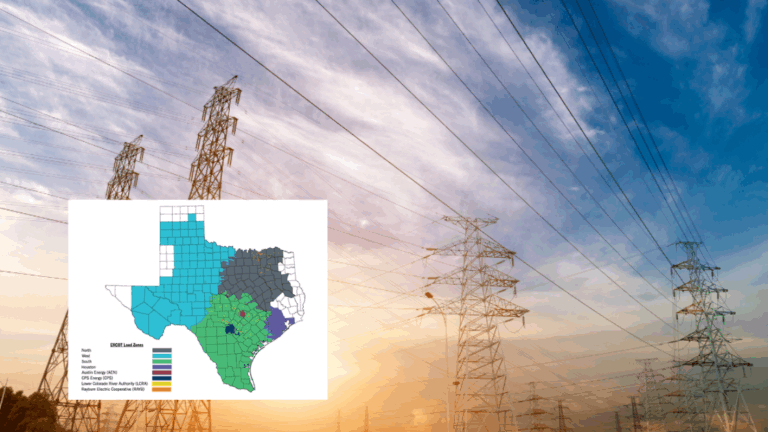As the electric grid continues its transition to renewable energy, the North American Electric Reliability Corporation (NERC) has introduced PRC-029-1—a critical ride-through compliance standard for Inverter-Based Resources (IBRs) such as solar, wind, and battery energy storage systems (BESS). This standard requires IBRs to remain connected during specific frequency and voltage excursions, enhancing grid reliability and supporting power system stability during disturbances.
At Keentel Engineering, we specialize in NERC compliance engineering services, helping renewable energy developers ensure their projects meet and exceed mandatory standards like PRC-029-1—efficiently, accurately, and cost-effectively.

What Is PRC-029-1?
PRC-029-1: Frequency and Voltage Ride-Through Requirements for Inverter-Based Resources (IBRs)
Purpose:
PRC-029-1 is a critical NERC reliability standard that outlines the ride-through requirements for Inverter-Based Resources (IBRs). It ensures that IBRs—such as solar, wind, and battery energy storage systems—remain connected and operational during abnormal grid conditions, including frequency and voltage excursions. This continuous operation supports the stability of the Bulk Power System (BPS) during disturbances. You can view the official NERC PRC-029-1 standard for complete technical details and regulatory guidelines.
Applicability:
PRC-029-1 applies to Generator Owners (GOs) of the following:
➤ Non-BES IBRs with an aggregate capacity of 20 MVA or more, connected at voltages ≥ 60 kV
➤ Bulk Electric System (BES) inverter-based resources
What Are the Key Compliance Requirements?
The NERC PRC-029-1 compliance requirements are designed to ensure that Inverter-Based Resources (IBRs) remain online and provide support during voltage and frequency disturbances. Below are the key technical and documentation obligations for Generator Owners (GOs):
1. Voltage Ride-Through Requirements (R1, R2)
IBRs must maintain ride-through capability during voltage excursions, as defined in Attachment 1 of the standard.
Supporting evidence must include:
➤ Dynamic simulation data
➤ Plant-level control settings
➤ Disturbance event recordings
If the IBR enters current-blocking mode, it must resume current delivery within 5 cycles.
2. Frequency Ride-Through Requirements (R3)
IBRs must remain online during frequency deviations ranging from 58.8 Hz to 61.2 Hz (continuous operation zone).
The allowed Rate of Change of Frequency (RoCoF) must not exceed 5 Hz/second.
3. Hardware Limitation Exemptions (R4)
If hardware limitations prevent full compliance, Generator Owners must prepare and submit formal documentation.
Notification must be shared with the Planning Coordinator, Transmission Planner, Reliability Coordinator, Transmission Operator, and Compliance Enforcement Authority (CEA) within 12 months of standard effective date.
Evidence Retention and Monitoring Requirements
All compliance documentation and disturbance monitoring data must be retained for a period ranging from 36 months to 5 years, depending on the specific requirement being addressed.
PRC-029-1 – Why It Matters
Failure to comply with NERC PRC-029-1 can result in high-risk violations that jeopardize your project’s interconnection approval, certification, and future NERC audit outcomes. Non-compliance may also expose projects to penalties, fines, or costly retrofits.
Timely and accurate PRC-029-1 compliance ensures the following critical benefits:
- Enhanced grid reliability during operational events such as faults, switching actions, or voltage excursions
- Seamless integration into Transmission Provider (TP) and Independent System Operator (ISO) operations
- Protection from delays, compliance enforcement actions, and expensive post-construction modifications
Meeting this standard is not only about regulatory alignment—it’s also a proactive step toward long-term system stability and operational success.
Keentel Engineering – Turnkey PRC-029-1 Compliance Services
With over 30 years of experience in power system engineering, Keentel Engineering delivers comprehensive NERC compliance solutions, including full support for PRC-029-1 ride-through requirements. Our team partners with renewable energy developers, EPC contractors, and utility operators to ensure their projects meet all regulatory obligations efficiently and accurately.
We provide end-to-end PRC-029-1 compliance engineering services, including:
- Ride-through simulation studies using PSSE, PSCAD, and other industry-leading tools
- Protection and control setting review to validate IBR system response
- Dynamic model validation for regulatory submission and interconnection readiness
- Disturbance Monitoring System (DMS) setup and integration
- Hardware limitation analysis with formal documentation for exemption eligibility
- Regulatory liaison with Planning Coordinators (PC), Transmission Planners (TP), and Reliability Coordinators (RC) for exemption handling and compliance assurance
Our proven methodology helps clients meet NERC PRC-029-1 requirements without delays, retrofits, or audit risk.
Why Choose Keentel Engineering?
Keentel Engineering is a trusted partner for NERC compliance and ride-through engineering services, delivering results with precision, speed, and reliability. Here’s why industry leaders choose us:
✔ Licensed Professional Engineers (P.E.s) operating across multiple U.S. states
✔ A proven track record of successful compliance with major grid operators including ERCOT, CAISO, PJM, MISO, and SPP
✔ Fast turnaround on technical studies to meet critical interconnection deadlines
✔ Cost-effective engineering consulting for both utility-scale and mid-sized distributed energy projects
From dynamic modeling to audit support, we offer complete coverage tailored to your project’s needs.
Frequently Asked Questions (FAQ)
Who must comply with PRC-029-1?
A: All Generator Owners of IBRs connected at or above 60 kV and those contributing to ≥20 MVA aggregate must ensure compliance.
What is considered a Ride-Through violation?
A: Any tripping of IBRs during specified voltage/frequency excursions outside of allowable conditions without appropriate documentation is considered a violation.
What types of evidence are required for audits?
A: Disturbance recordings, simulation results, plant settings, and documentation from system operators (TP, RC, PC, TO) confirming compliance or exemptions.
What if my system has hardware limitations?
A: Keentel Engineering assists with documenting exemptions, identifying root causes, and filing with appropriate regulatory bodies within NERC’s timeline.
What software is used in compliance studies?
A: Keentel uses PSSE, PSCAD, ASPEN, and other advanced tools to model and verify ride-through capabilities
Ready to Comply with PRC-029-1?
Don’t let Ride-Through compliance delay your COD or expose your project to NERC penalties. Keentel Engineering is your partner for success across all phases—from modeling to monitoring, and from documentation to audit readiness.
Call 813-609-0707 or contact our engineering team.






